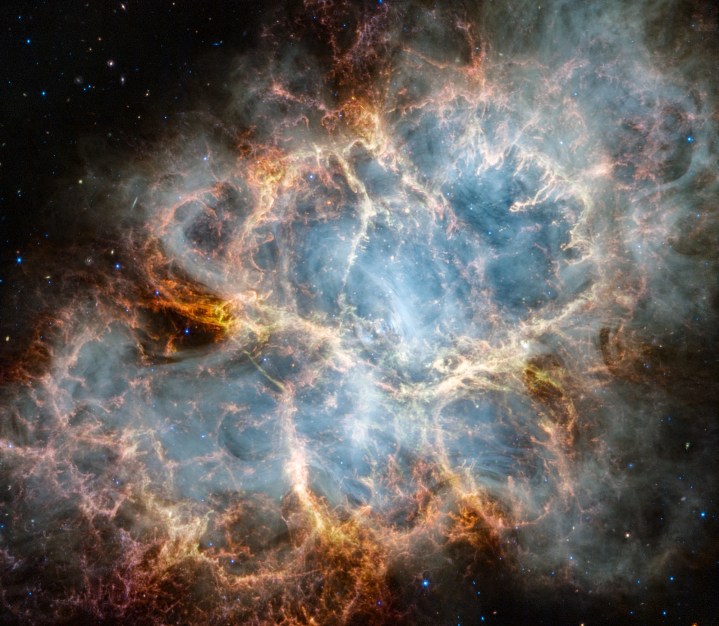Located 6,500 light-years away, the Crab Nebula is famous among astronomers for its elaborate and beautiful structure. A new image from the James Webb Space Telescope shows off the gorgeous nebula as seen in the infrared wavelength, highlighting the filaments of dust that create its cage-like shape.
The nebula is a supernova remnant, the result of a massive star that exploded at the end of its life centuries ago. The supernova was observed on Earth in 1054 CE, and since then astronomers have watched the nebula that resulted from that explosion grow and change.

The nebula has previously been imaged by other telescopes such as the Hubble Space Telescope which looks primarily in the optical wavelength and, more recently, NASA’s Imaging X-ray Polarimetry Explorer observatory which looks in the X-ray wavelength. These results have been combined into a previous image showing the nebula in optical, infrared, and X-ray.
The new Webb image, however, shows different aspects of the object. Using its NIRCam (Near-Infrared Camera) and MIRI (Mid-Infrared Instrument) instruments, Webb can see the structures of gas filaments, which are shown in red and orange, as well as the regions of dust that appear as the fluffy yellow, white, and green areas. Another aspect picked up in the infrared image is a type of radiation called synchrotron radiation, created by a rotating neutron star with a strong magnetic field, which is shown as the white milky substance in the interior of the nebula.
The nebula is being studied to learn about how it formed from the supernova event, which threw out clouds of material when the star exploded.
“Webb’s sensitivity and spatial resolution allow us to accurately determine the composition of the ejected material, particularly the content of iron and nickel, which may reveal what type of explosion produced the Crab Nebula,” said lead researcher Tea Temim of Princeton University in a statement.
There will be yet more data about the Crab Nebula coming soon, as Hubble has also recently re-imaged the object for the first time since it took its original observations in 1999 and 2000.
Editors' Recommendations
- Celebrate Hubble’s 34th birthday with this gorgeous nebula image
- James Webb images capture the galactic winds of newborn stars
- See what James Webb and Hubble are observing right now with this tool
- See 19 gorgeous face-on spiral galaxies in new James Webb data
- James Webb snaps a stunning stellar nursery in a nearby satellite galaxy




